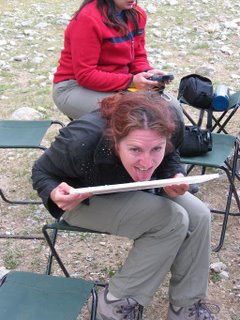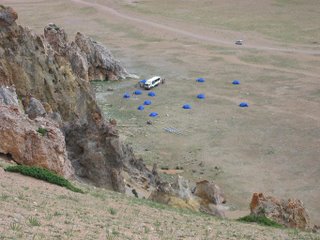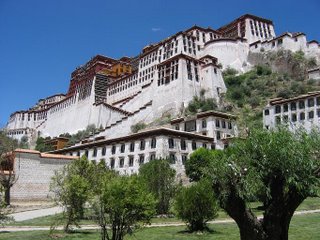Aside from a mild panic induced by Xian's taxi drivers apparently putting the word out that the 23 odd westerners with rucksacks had some kind of highly infectious disease and should be avoided at all costs causing us to very nearly miss the train, the journey was pretty uneventful. The sleeper trains are reasonably pleasant. Despite being crammed like agoraphobic fish into beds that are bunked three high and make no pretense at being designed for 6'4'' westerners, they are at least air-conditioned, clean, the mattresses are relatively comfortable, the toilets relatively clean (certainly, in general, a lot more so than on British trains) and the food is much better than the Lonely Planet would have you believe. The only real discomfort is the continual snoring which, for some reason, even my ear-plugs could not eradicate.
I spent most of the conscious part of the journey (until the mandatory 10pm kurfew) exercising my newly acquired and woefully inadequate 'Mah Jong' skills. This under the watchful eye and abusive tuition of a local expert who was clearly exasperated with my obtuse inability to appreciate the subtleties of the game. The rest of the journey was spent looking up at the plywood ceiling of the bunk above me thinking up novel ways of killing the Chinese guy in the next bunk who was engaged in a rousing counterpoint to the noise of the train through the medium of snore. A Hurculean effort on his part to keep it up for a solid 10 hours ensured that I achieved only a bear minimum of sleep. It was, in my mind, justifiable homicide.
Arrival in the hazy morning sun of the Beijing dawn 14 hours later was, as a result of sleep deprivation, somewhat surreal. It was a huge relief to be bundling into a taxi and whisked away through the mistifying confusion that is Beijing towards our hotel.


























